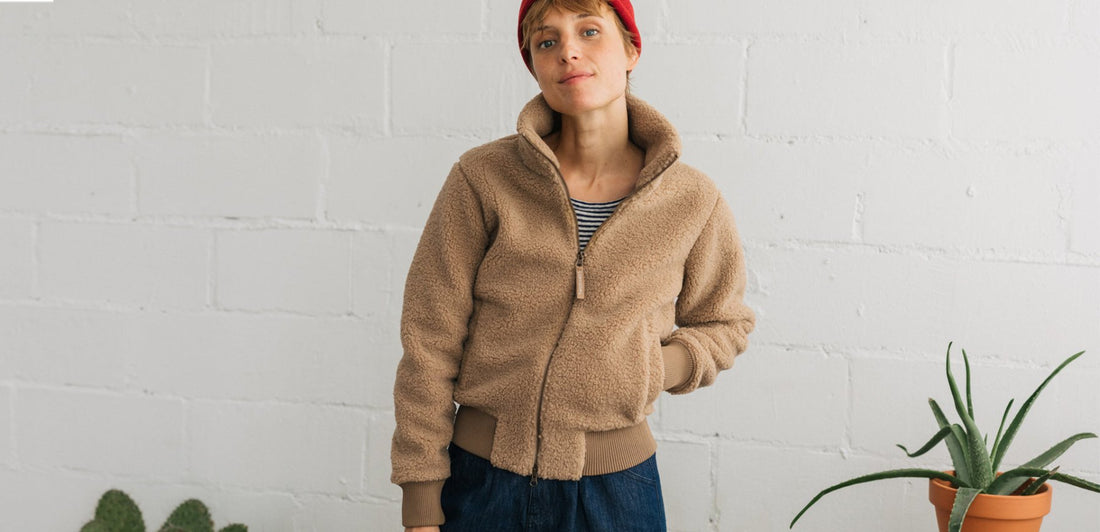Keeping our oceans clean has, and always will be, one of our main priorities here at TWOTHIRDS. Since our eco clothing brand’s inception in 2010, we have done everything we can to cut waste, overproduction, and emissions, so that our beloved ocean can heal and thrive.
Recycled materials have been at the forefront of this mission, as ocean plastic trash or post consumer waste is repurposed into the finest sustainable clothing. However, as is often the case with well-intentioned eco solutions, they may not always be a win-win for the environment. This is due to the fact that according to the Ellen MacArthur Foundation, just 1% of all used clothing is itself recycled and turned into new ethical clothing.
Why is this? The answer is partly due to fast fashion business models, which actively create surplus clothing to drive profit at the expense of the natural world. But it’s not as simple as blaming our economic system, because sometimes the reason is more to do with the technical limits of modern recycling processes.

Fabric Blends
Fast fashion and slow fashion brands alike are awash with eco clothing made from complex fabric blends. Elastane adds flex and comfort to eco activewear; a hint of cashmere delivers softness to a sustainable jacket or pair of eco-friendly pants. Unfortunately the blending of such fibres and yarns makes them virtually impossible to recycle and reuse as clothing. So where do the materials used to make recycled fabrics come from?
Eco Fashion’s Plastic Bottle Addiction
The thorny answer to the above question is that most recycled polyester fabric is not made from upcycled clothing, but instead comes from recycled PET bottles. Why? Because most water bottles, milk bottles and the like are made from 100% clear PET. Essentially this means that rather than those bottles being turned into new bottles again and again and again, circularity is being interrupted by sustainable fashion brands that turn bottles into clothes, which then cannot be recycled.
This means that while many eco clothing brands like to boast about how much ocean plastic they salvage and turn into sustainable garments, this may not always be the most environmentally friendly outcome for such waste.
Don’t Hate The Bottle, Hate The System

The surprising solution to this dilemma is found within the designs of PET bottles themselves. Such bottles are the epitome of mono-material design: using one sole material to create an entire product, which in turn makes it simple and cost-effective to recycle.
Sustainable clothing designers such as our very own Pilar García and Toni Ramos have taken note, endeavouring to include more mono-material pieces in our most recent slow fashion collections.

Mono-Materials In Action
Some of the best examples of our newest mono-material pieces can be found in our range of sustainable fleece jackets. Items like the Broulee and the Shark for women, as well as the Cortegada for men, are made almost entirely from the same material: recycled polyester. This isn’t just true of their main outer fleeces, but also pocket linings, binding, sleeve linings, and indeed anything which isn’t a zip or a button.

Such mono-material design means that all a recycling centre needs to do to prepare a sustainable jacket for recycling is to remove its zips and buttons. This is a far less strenuous affair than having to separate different jacket panels, all of which might be crafted from different materials. While such design approaches have long been in the mainstream in sectors like the packaging industry, fashion has been a little slow to catch on, but not anymore.
A Big Win For The Ocean
Of course, mono-material use on its own will not fully alleviate the pressure on our oceans. Such innovative eco fashion design must also be accompanied by other elements of fashion circularity. This can include advances in clothing durability and even new ways of selling sustainable clothing, such as rental and resale.

Where durability is concerned, our design team has been working tirelessly to upgrade those features on our sustainable jackets which often suffer the most wear and tear, such as pockets, plackets, and linings. For this reason there are now many TWOTHIRDS eco jackets that will last longer than ever before, and require less trips to the repair shop.
All of this is a huge win for ocean lovers, who can support local slow fashion producers like TWOTHIRDS, while remaining confident that the eco clothing they own will be timeless, both in terms of style and usability.









